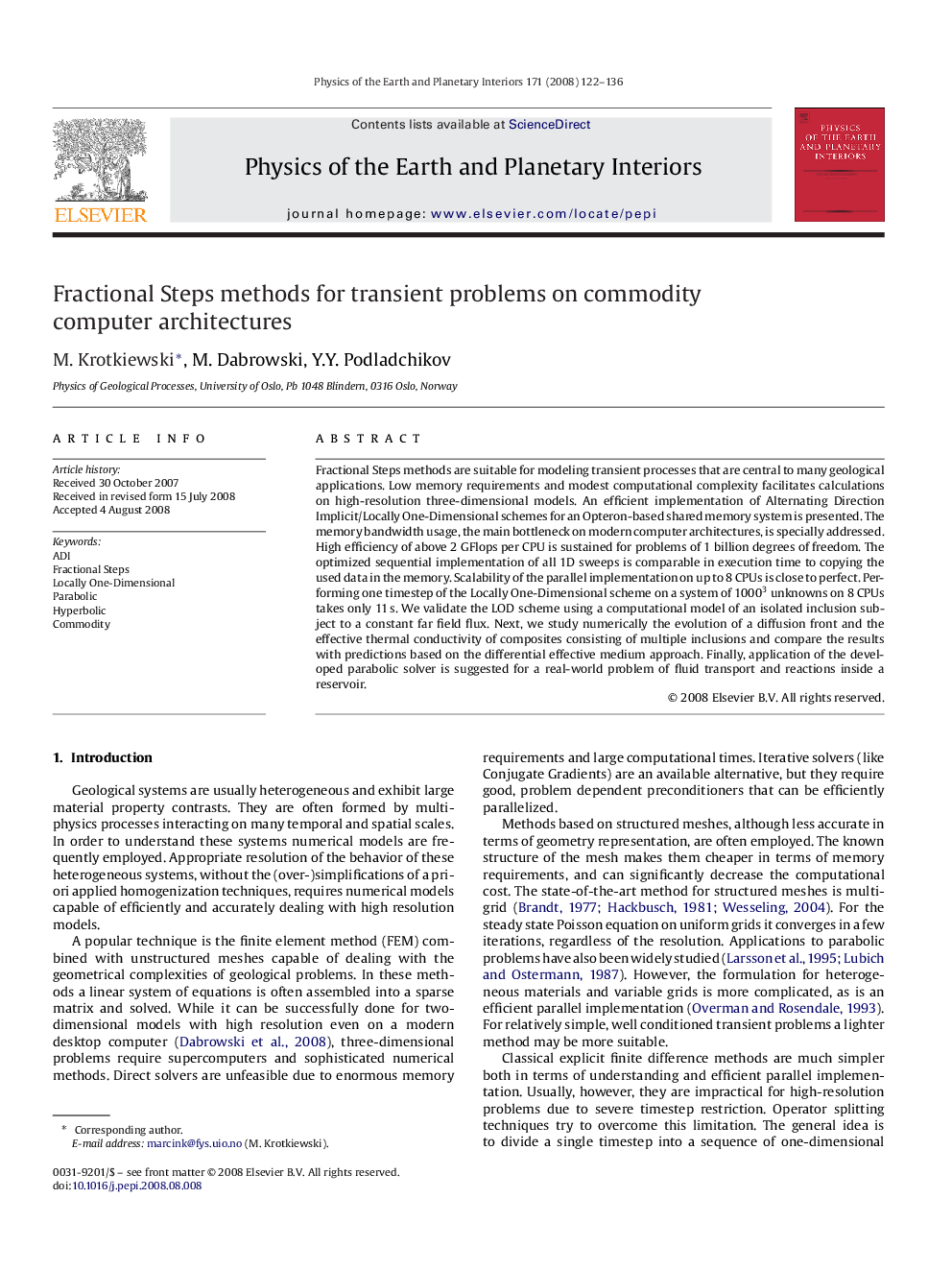| Article ID | Journal | Published Year | Pages | File Type |
|---|---|---|---|---|
| 4742311 | Physics of the Earth and Planetary Interiors | 2008 | 15 Pages |
Abstract
Fractional Steps methods are suitable for modeling transient processes that are central to many geological applications. Low memory requirements and modest computational complexity facilitates calculations on high-resolution three-dimensional models. An efficient implementation of Alternating Direction Implicit/Locally One-Dimensional schemes for an Opteron-based shared memory system is presented. The memory bandwidth usage, the main bottleneck on modern computer architectures, is specially addressed. High efficiency of above 2 GFlops per CPU is sustained for problems of 1 billion degrees of freedom. The optimized sequential implementation of all 1D sweeps is comparable in execution time to copying the used data in the memory. Scalability of the parallel implementation on up to 8 CPUs is close to perfect. Performing one timestep of the Locally One-Dimensional scheme on a system of 10003 unknowns on 8 CPUs takes only 11Â s. We validate the LOD scheme using a computational model of an isolated inclusion subject to a constant far field flux. Next, we study numerically the evolution of a diffusion front and the effective thermal conductivity of composites consisting of multiple inclusions and compare the results with predictions based on the differential effective medium approach. Finally, application of the developed parabolic solver is suggested for a real-world problem of fluid transport and reactions inside a reservoir.
Related Topics
Physical Sciences and Engineering
Earth and Planetary Sciences
Geophysics
Authors
M. Krotkiewski, M. Dabrowski, Y.Y. Podladchikov,
